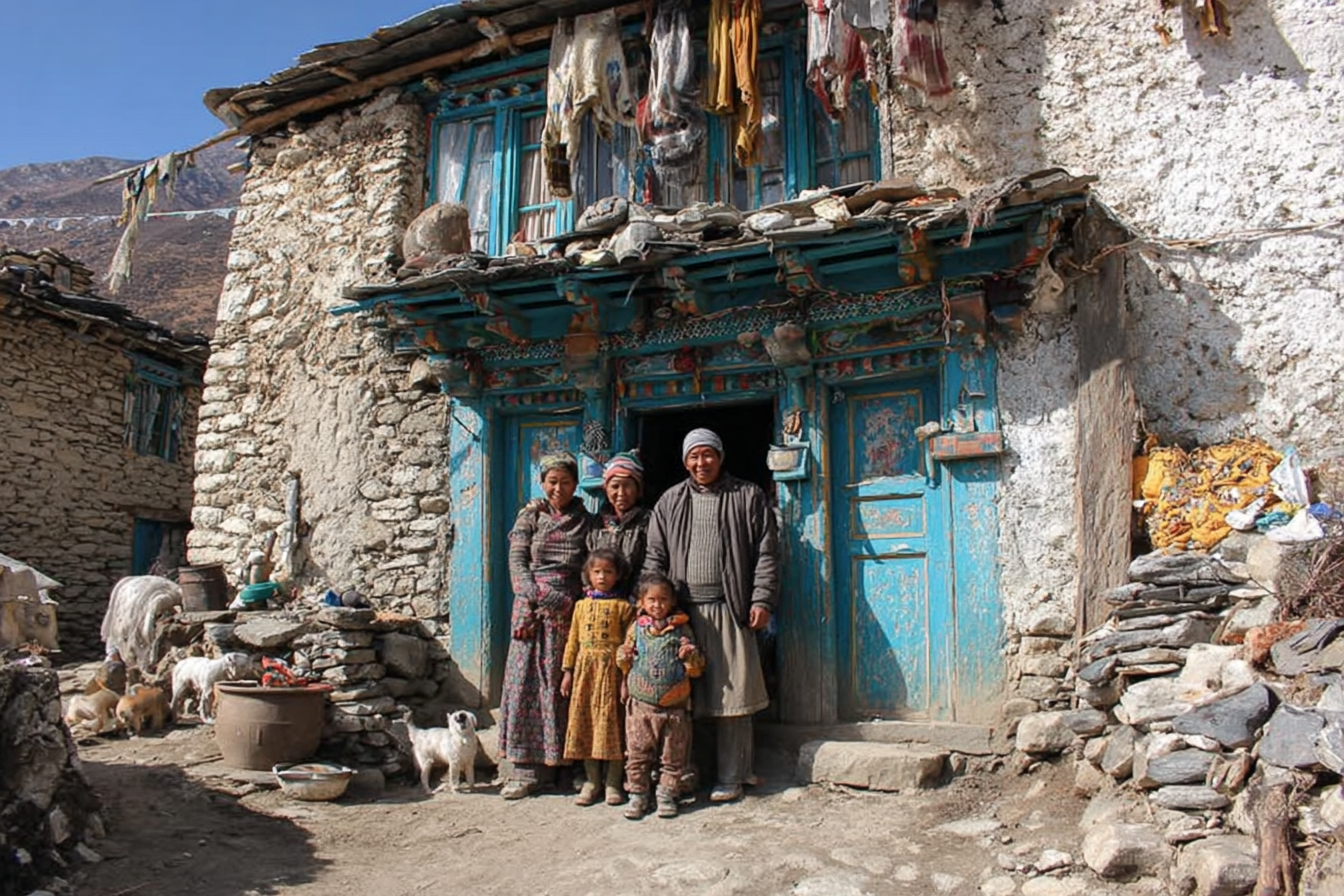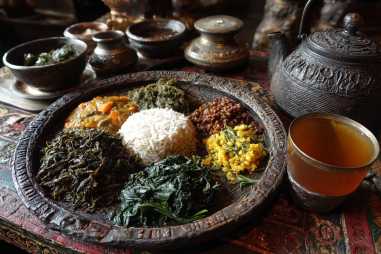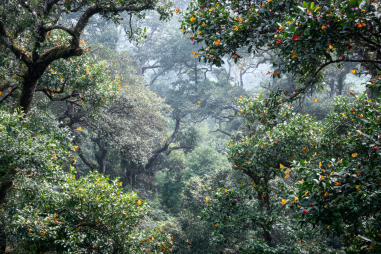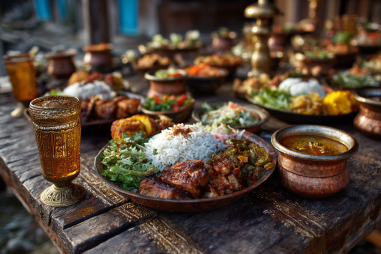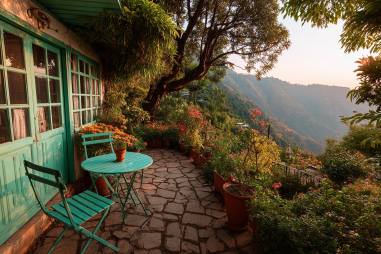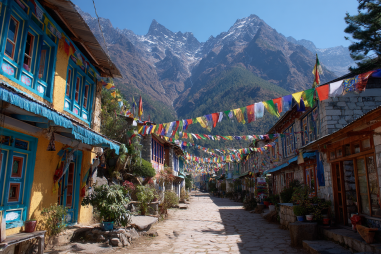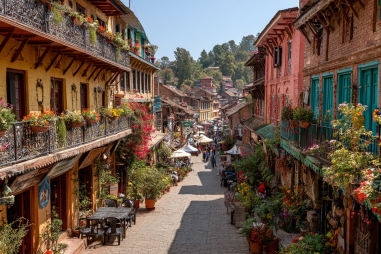Namche Bazaar, perched high in the Sagarmatha National Park of Nepal, is much more than a bustling trade hub for trekkers and mountaineers; it is the vibrant heartland of the Sherpa community. Known worldwide for their exceptional mountaineering skills, the Sherpas of Namche Bazaar embody a rich tapestry of history, culture, and tradition woven intricately with the rugged landscapes of the Himalayas. Their remarkable resilience and deep connection to the mountains have made them invaluable guardians of this majestic region. Let’s take a closer look at the Sherpa community’s fascinating journey, customs, and vital role in Himalayan expeditions.
History of the Sherpa People in Namche Bazaar
The Sherpas originally migrated from the eastern Tibetan region of Kham around the 15th century, settling in the higher elevations of Nepal. Namche Bazaar, established around the 1900s, quickly became their central trading post in the Khumbu region. Historically, the Sherpas adapted to their harsh environment with exceptional endurance and physical capability, which later translated into expertise in high-altitude mountaineering and guiding. Over generations, Namche Bazaar evolved into the cultural and economic nucleus for the Sherpa people, bridging Himalayan traditions with growing tourism and mountaineering industries.
Sherpa Culture and Social Structure
The Sherpa community in Namche Bazaar is deeply rooted in Tibetan Buddhist traditions, which shape their daily rituals, festivals, and social norms. Their social structure traditionally revolves around family clans and communal cooperation. Respect for elders and religious leaders is ingrained in their way of life. Homes often feature prayer flags, mani stones, and small shrines, reflecting spiritual devotion and a connection to the mountains that surround them. Community gatherings and festivals reinforce social bonds, and hospitality remains a hallmark of Sherpa culture, warmly welcoming visitors to their high-altitude homes.
Role in Mountaineering and Trekking
Sherpas have become synonymous with Himalayan expeditions. Their unparalleled knowledge of the terrain, combined with physiological adaptations to high altitudes, makes them indispensable as guides, porters, and climbers. Namche Bazaar serves as the main acclimatization stop for trekkers heading to Everest Base Camp and other peaks. Sherpa guides ensure the safety and success of climbers, often risking their lives on perilous routes. This mountaineering legacy began in the early 20th century and has since turned Sherpas into world-renowned ambassadors of high-altitude adventure, with many becoming elite mountaineers themselves.
Festivals and Traditional Celebrations
The Sherpa community celebrates numerous vibrant festivals that reflect their spiritual beliefs and communal harmony. One of the most prominent is Dashain, a major Hindu festival embraced with special Sherpa customs. Another key festival is Losar, the Tibetan New Year, marked by prayer ceremonies, masked dances, and feasts. The Mani Rimdu festival, unique to this Himalayan region, showcases religious performances by monks and traditional Sherpa dance dramas. These festivals not only preserve their rich heritage but also offer visitors a unique window into Sherpa cultural life.
Sherpa Cuisine and Crafts
Sherpa cuisine is hearty and designed to nourish the body in cold, high-altitude conditions. Staples include tsampa (roasted barley flour), dal bhat (lentil soup with rice), and momo (steamed dumplings). Butter tea, made with yak butter and salt, is a traditional drink that provides energy and warmth. In addition to their culinary traditions, Sherpa craftsmanship shines through in weaving, wood carving, and jewelry making. Handmade wool garments and religious artifacts are often sold at local markets, reflecting their artistic heritage and providing economic support for families.
Challenges and Opportunities Facing the Community
While tourism and mountaineering have brought prosperity to Namche Bazaar, the Sherpa community faces several challenges. The risks associated with high-altitude climbing remain significant, with many Sherpas enduring dangerous working conditions. Environmental concerns threaten the fragile Himalayan ecosystem, including waste management and climate change impacts. Additionally, modernization poses a threat to preserving traditional Sherpa culture and language. However, opportunities exist through sustainable tourism initiatives, education, and community-led conservation efforts that aim to empower Sherpas as stewards of both their heritage and environment.
How Tourists Can Support Respectful Tourism
Visitors to Namche Bazaar and the surrounding Khumbu region can play a crucial role in supporting the Sherpa community by practicing respectful and sustainable tourism:
- Respect local customs and ask permission before taking photographs.
- Support local businesses by purchasing authentic Sherpa handicrafts and dining at local restaurants.
- Hire Sherpa guides and porters through established agencies that ensure fair wages and proper working conditions.
- Participate in community-driven conservation projects or donate to organizations focused on sustainable development in the region.
- Minimize environmental impact by following trail etiquette, disposing of waste responsibly, and using refillable water bottles.
By embracing these guidelines, tourists contribute positively to the community’s well-being and the preservation of Sherpa traditions.
Honoring the Sherpa Heritage in Namche Bazaar
Namche Bazaar stands as a beacon of Sherpa resilience, culture, and hospitality amid the towering Himalayas. The Sherpa people’s deep spiritual connection to the mountains, their role as expert climbers and guides, and their rich traditions make them true guardians of this majestic region. As the gateway to some of the world’s most iconic peaks, Namche Bazaar offers travelers a unique opportunity to immerse themselves in Sherpa life — to learn about their history, share in their celebrations, and support a community that has shaped the landscape of Himalayan adventure. Respecting and honoring Sherpa heritage ensures that these remarkable people continue to thrive alongside the mountains they call home.

